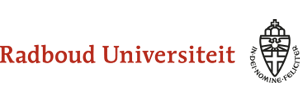American English Phonetics
Another American English Faculty Project
3.7 The stress in adjective compounds
Dutch and English frequently agree in the way adjective compounds are stressed, as is illustrated by ˈkleurenblind and ˈcolorblind, ˈhuizenˈhoog and ˈsky-ˈhigh. The following differences should be noted, however:
- when the first constituent is a noun and the second a verb, English often has the stress on the first constituent, but Dutch on both constituents. Compare ˈheart-warming and ˈhartverˈwarmend, ˈhair-raising and ˈangstaanjagend, ˈoil- fired and ˈolie-geˈstookt, ˈwater-cooled and ˈwatergeˈkoeld. When the first constituent is clearly local in meaning, however, English follows the Dutch pattern, as in ˈBoston-ˈbased.
- when the second constituent is prone (gemakkelijk onderhevig aan), proof, tight or worthy the stress falls on the first constituent: ˈstrike-prone, ˈfoolproof, ˈwatertight, ˈseaworthy. Their AN equivalents are stressed on both constituents, however: ˈwaterˈdicht, ˈzeeˈwaardig, etc. Note also ˈbloodthirsty, ˈcolorfast (kleurecht).
